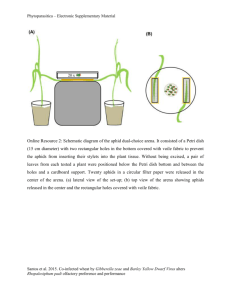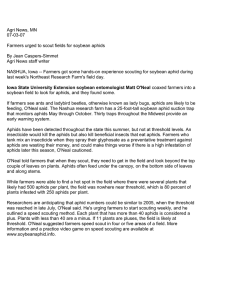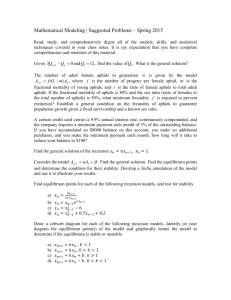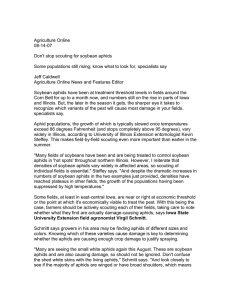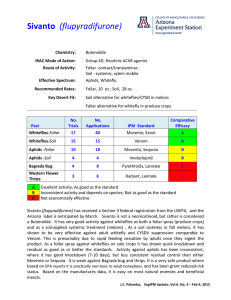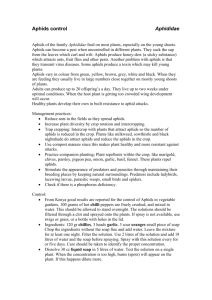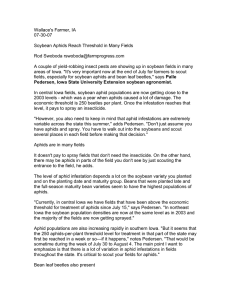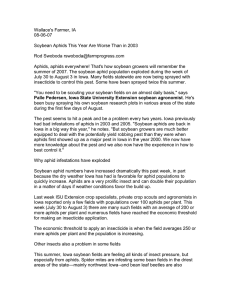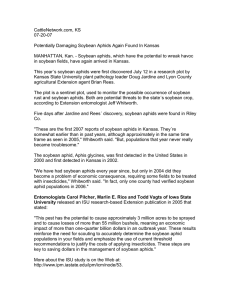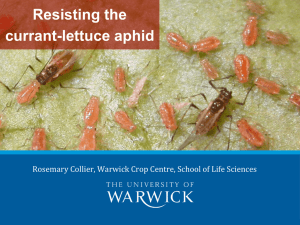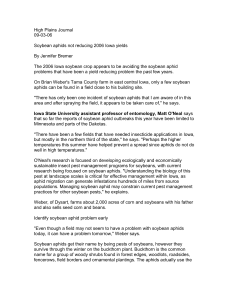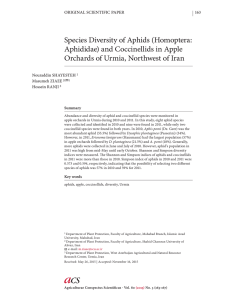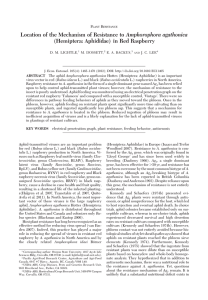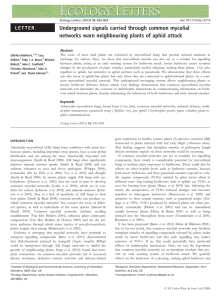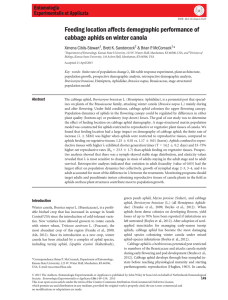Brownfield, MO 07-06-06 Soybean aphid numbers low; but for how long?
advertisement
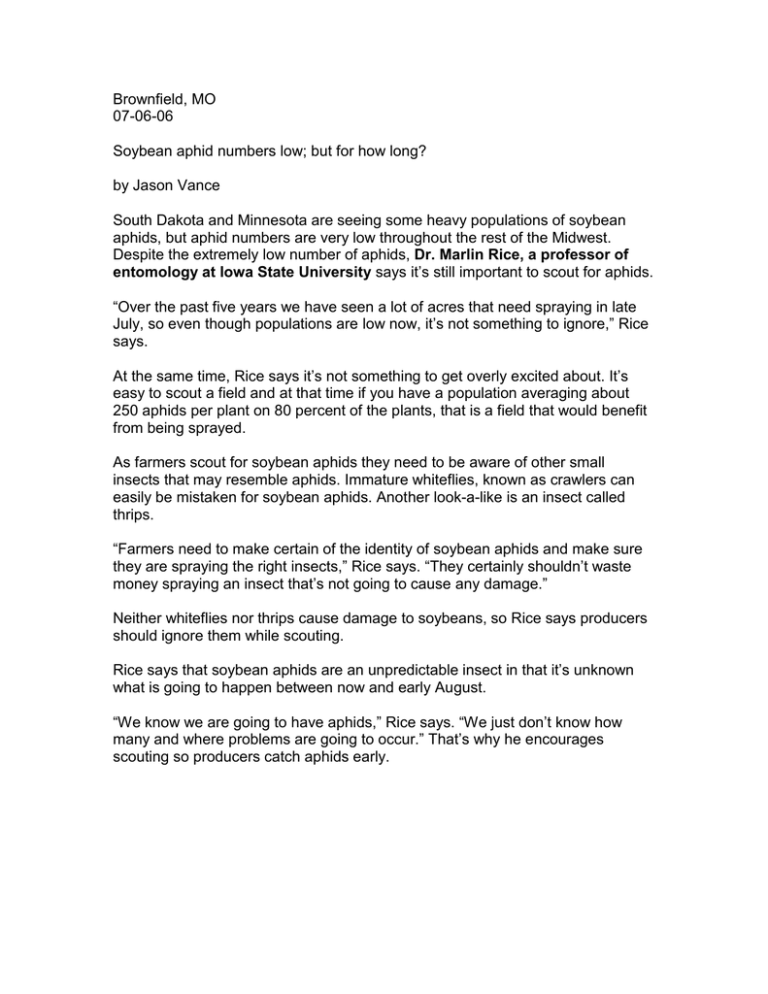
Brownfield, MO 07-06-06 Soybean aphid numbers low; but for how long? by Jason Vance South Dakota and Minnesota are seeing some heavy populations of soybean aphids, but aphid numbers are very low throughout the rest of the Midwest. Despite the extremely low number of aphids, Dr. Marlin Rice, a professor of entomology at Iowa State University says it’s still important to scout for aphids. “Over the past five years we have seen a lot of acres that need spraying in late July, so even though populations are low now, it’s not something to ignore,” Rice says. At the same time, Rice says it’s not something to get overly excited about. It’s easy to scout a field and at that time if you have a population averaging about 250 aphids per plant on 80 percent of the plants, that is a field that would benefit from being sprayed. As farmers scout for soybean aphids they need to be aware of other small insects that may resemble aphids. Immature whiteflies, known as crawlers can easily be mistaken for soybean aphids. Another look-a-like is an insect called thrips. “Farmers need to make certain of the identity of soybean aphids and make sure they are spraying the right insects,” Rice says. “They certainly shouldn’t waste money spraying an insect that’s not going to cause any damage.” Neither whiteflies nor thrips cause damage to soybeans, so Rice says producers should ignore them while scouting. Rice says that soybean aphids are an unpredictable insect in that it’s unknown what is going to happen between now and early August. “We know we are going to have aphids,” Rice says. “We just don’t know how many and where problems are going to occur.” That’s why he encourages scouting so producers catch aphids early.
